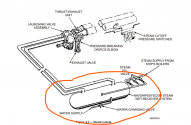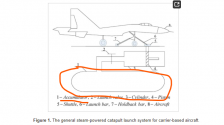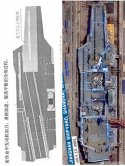I think the overall efficiency of EMALS is on the order of 60.5%.
The ESS (energy storage system) you posted is the first of the EMALS subsystems. EMALS uses 12 ESS energy storage subsystems that you posted, and each ESS of that accumulates 60 MJ, that's a total of 720 MJ.
What we do know is that this system is shared-mode between the 4 catapults, so most EMALS components are all shared-mode, and may include the rotors. Actually, I've read that the Ford has some design flaws that need to be addressed with the catapult. If one fails, the entire system is compromised. With the steam system, if one catapult falls, the other three can still function normally due to the level of independence of the catapult system, but in EMALS this is not possible due to the design requirement. With EMALS, if one catapult fails, it is impossible to repair it while the other catapults are in use. They cannot be isolated from each other, unlike the steam system. This is explained by the sharing of the various EMALS components for the 4 catapults.
The complete EMALS system from what I've read has only 4 rotors, each providing 121 MJ for the 4 catapults, it doesn't have 4 rotors for each catapult, as then it would have a 2000 MJ accumulation - totaling 16 rotors, this is totally unnecessary for EMALS, as there would be a lot of energy left, is too high a converted energy for the efficiency that the system imposes.
Based on what I've found available from the general EMALS system it uses four rotors which gives a total of 484 MJ, basically 4 rotors which release 121 MJ each. Well, knowing this information, there is a loss of 236 MJ of the 720 MJ accumulated in the ESS, which means an overall efficiency of 67.2% of the EMALS.
Taking as an example the USS Gerald Ford that uses 4 catapults, the fourth catapult does not operate at its maximum efficiency, that is, 3 catapults can use 121 MJ, but the last one cannot operate launching an aircraft with 121 MJ. Knowing that efficiency is 90% as various media reports, this means that of the 484 MJ of the rotors, removing a loss in efficiency of 10%, there is 435 MJ left for the 4 catapults. If each of the three catapults operate at their maximum capacity, it gives a total of 363 MJ used, leaving 72 MJ for the fourth catapult.
If we take as an example the 720 MJ accumulated from the ESS up to the launch of the aircraft with 435 MJ from the four catapults, this gives an overall EMALS efficiency of 60.5%.
Remembering, that was my conclusion so far of the overall effectiveness of EMALS. I didn't find other more realistic hypotheses for the efficiency of EMALS.



